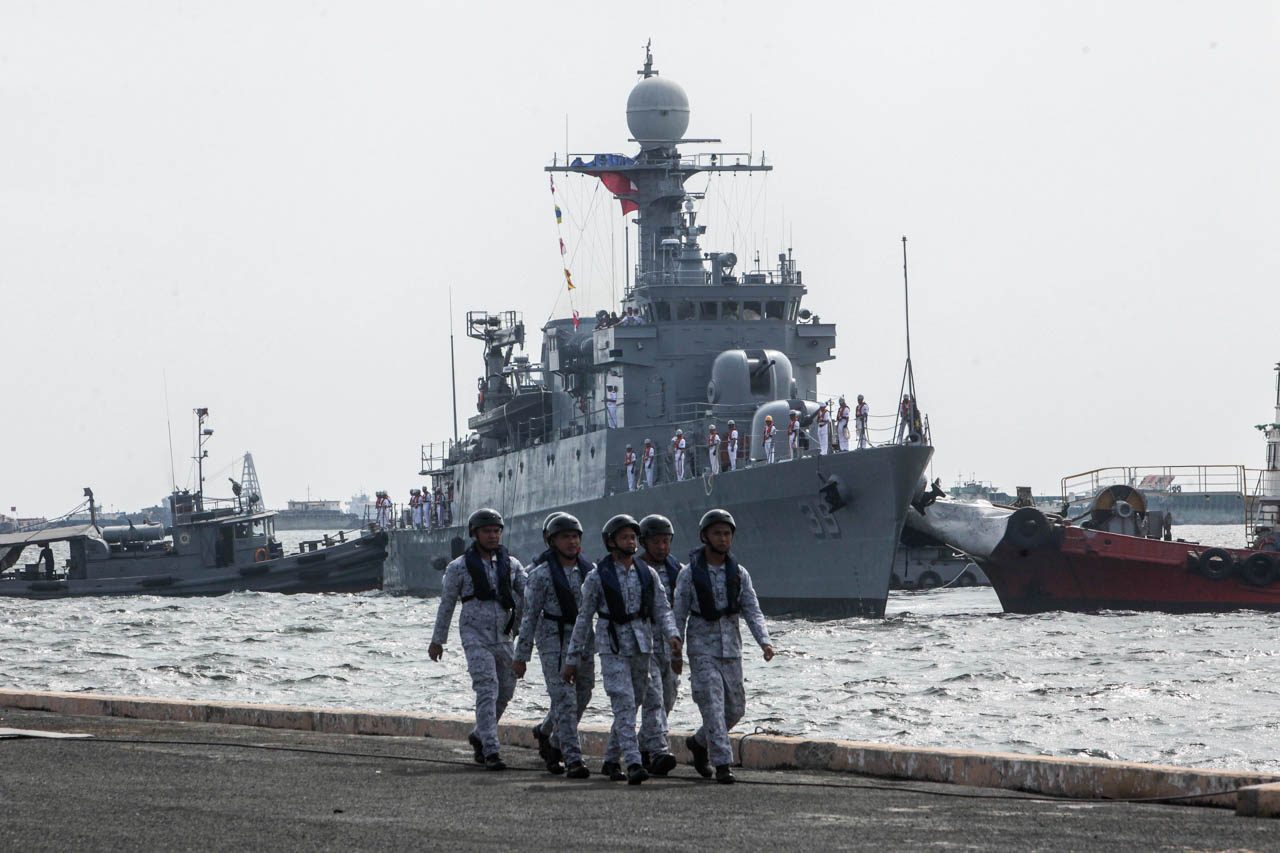SUMMARY
This is AI generated summarization, which may have errors. For context, always refer to the full article.

MANILA, Philippines – Why would a Chinese warship aim its laser gun at a Philippine corvette while in Philippine waters, considering this is usually used in “target acquisition” in the event of, say, a missile attack?
Defense Secretary Delfin Lorenzana made this observation during the government’s televised Laging Handa briefing on Tuesday, April 28, where he was asked about an incident involving a pair of Chinese and Filipino warships in the West Philippine Sea on February 17, which the Department of Foreign Affairs protested with the Chinese embassy in Manila on April 22.
While he conceded that laser guns are not really harmful, why they were aimed at a Philippine ship was offensive, Lorenzana said.
“Ang ating pagkakaalam diyan sa laser gun ay hindi naman ‘yan offensive masyado. Kaya lang, ito nga, ‘yang laser gun na ‘yan ay target acquisition ‘yan, para bang kung gagamitin nila ‘yung kanilang missile ay ‘yun muna ang uunahin nila itutok para makita nila ‘yung target,” he said. (What we know of that laser gun is that it’s not too offensive. However, the thing is, that laser gun is for target acquisition, so that if they were to use their missile, that’s the first thing they’ll aim so they can see their target.)
“So sa bandang ‘yan, medyo offensive nang kaunti ‘yung ano nila, it is offensive. Also, bakit kailangan nilang itutok ‘yung kanilang target acquisition radars sa ating eroplano o barko?” Lorenzana added.
(So in that sense, it was somewhat offensive. What they did it is offensive. Also, why do they need to aim their target acquisition radars at our airplanes or ships?)
The Philippine Navy corvette BRP Conrado Yap was patrolling the vicinity of the Kalayaan Island Group in the West Philippine Sea when it encountered the Chinese Navy corvette PLAN-514. The crew of the Conrado Yap radioed the Chinese warship, challenging it as it was in Philippine waters.
The crew on PLAN-514 responded that China had sovereignty over the area. The two naval crews repeated the exchange of radio challenges.
As both ships proceeded on their course, the crew of the Conrado Yap noticed that the Gun Control Director – what Lorenzana called the “laser gun” – was aimed at them.
Routine?
Lorenzana noted that exchanges of radio challenges between the Filipino and Chinese navies and air forces in the West Philippine Sea have become normal. (READ: Lorenzana, AFP defend military chief’s ‘out of place’ letter to Chinese envoy)
The Chinese warship aiming its radar gun on the Conrado Yap may have been part of that routine challenge, the defense chief said.
“Itong latest na radar gun ay hindi naman siguro nila gustong saktan o harm our [sailors]. Parang ano lang ito, sinusubukan lang nila kung ano reaksyon natin,” said Lorenzana.
(This latest with the radar gun, [the Chinese] might not have wanted to hurt or harm [our sailors]. They must have been just testing our reaction.)
“And we have already filed a protest with the Chinese government,” he added.
The Armed Forces of the Philippines Western Command based in Palawan, in a statement on April 23, called the Chinese warship’s move a “hostile act,” and along with its presence in the area, a “clear violation of international law and Philippine sovereignty.”
Aiming the Gun Control Director at a Philippine ship was indeed a hostile act tantamount to “targeting” it, which could have led to a miscalculation and escalation into violence, defense analyst Jose Antonio Custodio earlier told Rappler.
China has consistently maintained a military and paramilitary presence in the West Philippine Sea, which experts consider a “gray zone” tactic to virtually control the strategic waterway without sparking overt conflict with the Philippines and other claimant states.
China’s actions violate the July 2016 ruling by an international arbitral tribunal, which affirmed the Philippines’ sovereign rights in the West Philippine Sea, and debunked China’s sweeping “9-dash line” claim over nearly the entire sea. – Rappler.com
Add a comment
How does this make you feel?
There are no comments yet. Add your comment to start the conversation.